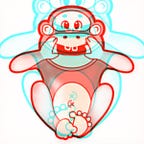Whose face have socialist values muddled? Street graffiti art, tamed by capital and consumption, is back on the conceptual front lines
A long wall in London’s graffiti art district, covered entirely in white paint, then emblazoned with the 24 red characters of ‘socialist core values’, has ignited fervent debate. As someone with a smattering of knowledge about contemporary art, I was instantly stirred by this “work,” and couldn’t help but chuckle.
The “explanation” for this event opens up a vast interpretive space, rich in meaning, and a veritable goldmine for commentary. It’s clear that this piece will continue to evolve — it’s not just dynamic, visceral, ongoing, and contentious, but also a long-term spectacle on social media, sparking a wave of interpretation.
Let me disclaim first that I find this “art action” barbaric and aggressive, reflecting the pettiness, confusion, and foolishness brought about by long-term authoritarianism. But that’s not important, for contemporary art is conceptual, and the work, once there, will interpret itself.
Street art graffiti, born out of the practices of 1960s America and the rise of mass media, has managed to establish itself and gradually develop globally. However, it originated in protest, on the streets, with political rebellion — it is contemporary and conceptual by nature.
Mass media and consumerism, under the years-long endorsement of capitalism, have gradually tamed the rebellious role of “street…
